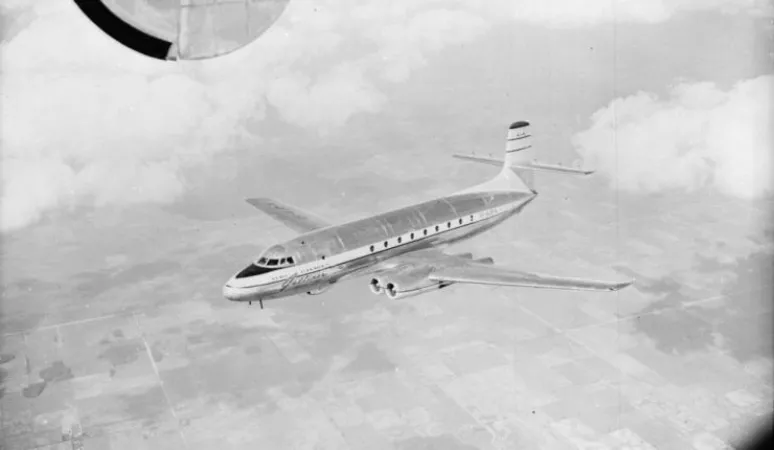The C-102 Jetliner
This article was originally written and submitted as part of a Canada 150 Project, the Innovation Storybook, to crowdsource stories of Canadian innovation with partners across Canada. The content has since been migrated to Ingenium’s Channel, a digital hub featuring curated content related to science, technology and innovation.
On August 10, 1949, A.V. Roe (Avro) Canada Ltd.’s C-102 Jetliner took to the sky. It was the first Canadian passenger jet aircraft to fly in North America. Unfortunately the C-102 Jetliner was 13 days behind the first flight of the de Havilland 106 Comet out of the United Kingdom, making it the second passenger jet aircraft to fly in the world. While the C-102 Jetliner would never carry any paying passengers, it did conduct the world’s first jet airmail flight from Toronto, Ontario, to New York, New York, on April 18, 1950. While the Jetliner’s technology was ahead of its time, its potential was never fully realized. Only a single Jetliner prototype was manufactured in Malton, Ontario, and in December of 1951, all further development and production was halted. The reason for the halt is that A.V. Roe saw more potential in designing technologically advanced military aircrafts, such as the CF-100 Canuck (which saw action during the Korean War) and the CF-105 Arrow (intended to provide top-level air defence during the Cold War). In 1956, most of the C-102 Jetliner was sold off for scrap, but the nose remains intact and can be viewed at the Canadian Aviation and Space Museum, in Ottawa, Ontario.














![A block of photographs showing some of the people involved in the bombing of beluga whales in the estuary and gulf of the St. Lawrence River. Anon., “La chasse aux marsouins [sic]. » Le Devoir, 15 August 1929, 6.](/sites/default/files/styles/thumbnail_7/public/2024-09/Le%20Devoir%2015%20aout%201929%20page%206.jpg?h=584f1d27&itok=TppdLItg)






